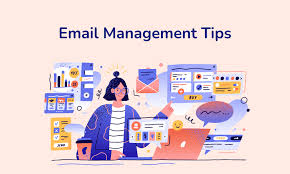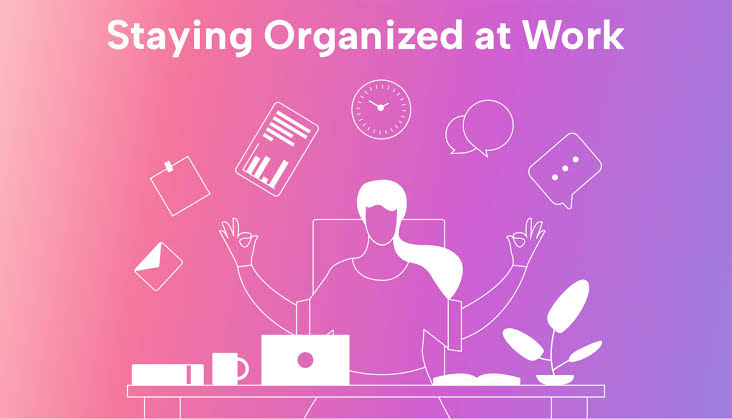In the fast-paced digital world of July 2025, email remains one of the most essential communication tools for professionals and individuals alike. Whether you are managing a personal inbox, handling customer support, or leading a remote team, staying on top of your emails is key to productivity, organization, and mental clarity. However, the volume of emails many people receive daily can quickly become overwhelming without a structured system. Effective email management is no longer just a productivity hack—it is a necessity in today’s connected world. The good news is that with the right strategies, you can transform your email habits and regain control of your inbox.
Start Your Day by Checking Emails Strategically
Instead of diving into your inbox the moment your day begins, it is smarter to check emails during designated time blocks. Many productivity experts recommend waiting at least 30 minutes to an hour after starting your workday to review your emails. This allows you to focus first on high-priority tasks rather than getting lost in communication loops. Once you do check your emails, have a goal in mind—decide what needs your immediate attention, what can wait, and what can be ignored. This approach helps prevent email from taking over your day and keeps you focused on your real priorities.
Use the Two-Minute Rule for Quick Replies
One of the most effective tactics in email management is the two-minute rule. If an email takes less than two minutes to respond to or resolve, handle it immediately. This rule keeps your inbox from becoming a to-do list filled with minor tasks and helps reduce digital clutter. Delaying responses to quick messages only compounds the backlog, especially in a high-volume inbox. By applying the two-minute rule consistently, you can clear out a significant portion of emails with minimal effort and stay on top of your communication load.
Set Up Email Filters and Labels
Filters and labels are powerful tools for automatically organizing your inbox. Most email platforms, including Gmail, Outlook, and newer AI-powered apps as of 2025, offer advanced filtering options that can sort incoming mail based on sender, subject, keywords, or categories. By creating rules, you can direct newsletters to a reading folder, send client emails to a priority folder, and archive promotional content without needing to sort through everything manually. This not only saves time but helps you find relevant information faster when needed.
Unsubscribe Ruthlessly from Unnecessary Emails
One of the fastest ways to reduce inbox clutter is to unsubscribe from newsletters, promotions, or mailing lists that you no longer find useful. In 2025, inboxes are still flooded with marketing emails, and these messages can often distract or hide important communications. Schedule a day each month to review and unsubscribe from any lists that no longer serve your goals. Many email apps now have a one-click unsubscribe button or even AI suggestions for cleaning up low-engagement emails. The fewer distractions in your inbox, the easier it becomes to focus on what matters.
Use Email Templates for Routine Messages
If you often find yourself typing the same message over and over, using email templates can save you hours each week. Whether you’re confirming meetings, responding to common inquiries, or sending updates to clients or colleagues, having pre-written templates can streamline your communication. Most modern email services allow you to create and store templates for repeated use. In 2025, AI-enhanced platforms can even auto-suggest template replies based on previous conversations, making your email workflow even smoother.
Turn Off Notifications to Minimize Distractions
Constant email alerts can disrupt your focus and productivity. Unless your job requires real-time responses to emails, consider turning off push notifications on both your phone and computer. Instead, schedule specific times during the day to check and respond to emails. This technique, often called email batching, helps you stay in control of your time and reduces context-switching, which is one of the biggest productivity killers in digital workspaces. More companies in 2025 are encouraging their employees to follow notification-free policies to reduce burnout and enhance focus.
Archive or Delete Emails You Don’t Need
A cluttered inbox is like a cluttered desk—it makes it harder to think clearly. Make it a habit to archive or delete emails once they have served their purpose. If the email contains information you might need later, archive it into a labeled folder. If not, delete it. Many email platforms offer automated archiving tools or AI bots that suggest clean-up actions based on email age or subject matter. By regularly clearing out unnecessary messages, you create a more organized and stress-free inbox.
Schedule Email-Free Time Blocks
It’s important to protect your most productive hours by scheduling time blocks where you completely avoid email. Whether it’s during deep work sessions, strategic planning, or creative tasks, having uninterrupted time is crucial for meaningful output. Inform your colleagues or team when you are offline from email and use status updates or calendar blocks to reinforce this boundary. In July 2025, smart calendar integrations now allow users to automatically decline email notifications during focus periods, reinforcing digital boundaries more efficiently than ever.
Prioritize Emails with Flags or Stars
Not all emails are created equal. Some require urgent action, while others can wait. Using flags, stars, or color-coded tags can help you visually separate high-priority messages from less important ones. This allows you to quickly identify what needs immediate attention and plan your response accordingly. Many email clients now offer AI-powered smart sorting, which ranks your messages based on importance or frequency of interaction. Leveraging these features ensures that your time is spent on the most valuable correspondence.
Review and Clean Your Inbox Weekly
Even with the best strategies, emails can pile up. Set aside time at the end of each week to review your inbox, respond to lingering messages, archive old threads, and delete anything irrelevant. Think of this like a digital housekeeping routine. A clean and organized inbox sets a positive tone for the week ahead and keeps you from feeling overwhelmed by leftover tasks. In 2025, many professionals include “email review” as part of their weekly planning ritual to maintain better workflow management.
Conclusion
Effective email management is not just about keeping your inbox clean—it’s about taking control of your time, reducing stress, and improving communication. With an average person receiving hundreds of emails weekly, the ability to manage this flow efficiently can be a game-changer. By implementing these ten tips—from using filters and templates to scheduling email-free time blocks—you can transform your inbox from a source of stress into a powerful tool for productivity. As of July 2025, with smarter email technologies and better digital habits, managing your inbox no longer has to feel like an uphill battle.



